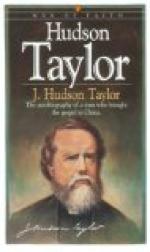Another proclamation, offering a reward of fifty pounds, was published by the “Honorable Cadwalader Colden, Esquire, His Majesty’s Lieutenant-Governor and Commander-in-Chief of the Province of New York and the territories depending thereon in America,” with another “God Save the King” at the end of it. But the people who commenced to write Liberty with a capital letter and the word “king” in lower case type were not daunted. Captain Alexander McDougal was arrested as the supposed author. He was imprisoned eighty-one days. He was subsequently a member of the Provincial Convention, in 1775 was appointed Colonel of the first New York Regiment, and in 1777 rose to the rank of Major-General in the U. S. Army. New York City could well afford a monument to the Sons of Liberty. She has a right to emphasize this period of her history, for her citizens passed the first resolution to import nothing from the mother country, burned ten boxes of stamps sent from England before any other colony or city had made even a show of resistance, and when the Declaration was read, pulled down the leaden statue of George III. from its pedestal in Bowling Green, and moulded it into Republican bullets.
* * *
And not a verdant glade or mountain hoary,
But treasures up within the glorious story.
Charles Fenno Hoffman.
* * *
In 1699 the population of New York was about 6,000. In 1800, it reached 60,000; and the growth since that date is almost incredible. It is amusing to hear elderly people speak of the “outskirts of the city” lying close to the City Hall, and of the drives in the country above Canal Street. In the Documentary History of New York, a map of a section of New York appears as it was in 1793, when the Gail, Work House, and Bridewell occupied the site of the City Hall, with two ponds to the north—East Collect Pond and Little Collect Pond,—sixty feet deep and about a quarter of a mile in diameter, the outlet of which crossed Broadway at Canal Street and found its way to the Hudson.
=Greater New York.=—In 1830, the population of Manhattan was 202,000; in 1850, 515,000; in 1860, 805,000; in 1870, 942,000; in 1880, 1,250,000; in 1892, 1,801,739; and is now rapidly approaching three million. Brooklyn, which in 1800 had a population of only 2,000, now contributes, as the “Borough of Brooklyn,” almost two million. So that Greater New York is the centre of about six million of people within a radius of fifteen miles including her New Jersey suburbs with almost five millions under one municipality.
=Brooklyn.=—In June, 1636, was bought the first land on Long Island; and in 1667 the Ferry Town, opposite New York, was known by the name “Breuckelen,” signifying “broken land,” but the name was not generally accepted until after the Revolution. Columbia Heights, Prospect Park, Clinton Avenue, St. Mark’s Place and Stuyvesant Heights are among the favored spots for residence.




